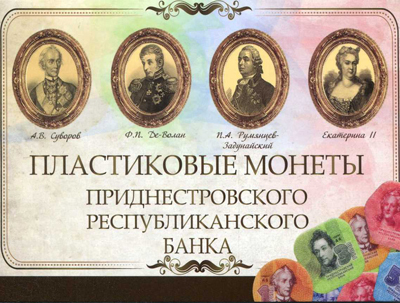Composite coins - an alternative to paper and metal
 On the example of an article about the most beautiful bills in the world, we at PayOnline processing company were convinced that materials on the subject of original money resonate with users of Geektimes. That is why we decided to continue the cycle of articles and prepare a material about a special type of coins distributed in the territory of Transnistria.
On the example of an article about the most beautiful bills in the world, we at PayOnline processing company were convinced that materials on the subject of original money resonate with users of Geektimes. That is why we decided to continue the cycle of articles and prepare a material about a special type of coins distributed in the territory of Transnistria.Quite recently, Goznak JSC announced positive results and readiness for scaling the Plamet project, as a result of which, in August 2014, coins made of composite material appeared on the territory of the Pridnestrovskaia Moldavskaia Respublika.
Composite material is characterized by a porous multilayer fibrous structure. Composite coins, which will be discussed further, in fact consist of several layers, impregnated with polymeric materials and under the influence of high temperatures united into a single whole. So, for example, the image of each composite coin, unlike metal counterparts, is not on the surface, but as it were, inside - under another outer layer.
Issue 1. How did world currencies get their names?
Issue 2. Rating of the most beautiful money of the world
Issue 3. Composite coins - an alternative to paper and metal
Release 4. Money of the XX century: a selection of bills, out of circulation
')
Composite coins owe their appearance to the Transnistrian Republican Bank, to which Goznak offered to issue them in 2014. The newly minted development of the Research Institute "Goznak", made of composite materials and, according to the manufacturer, borrowed the best characteristics from standard banknotes and coins, got its own name "Plamet". And the value of the new coins was 1, 3, 5 and 10 rubles.
There is nothing extraordinary in the name “Plamet” - the neologism was formed from the phrase “payment label”.
At the time, among the reasons for the emergence of composite coins was the small service life of small denominations of banknotes, which averaged 6-12 months in Transnistria. As for metal coins, the rapid loss of their external gloss, expensive production, limited color palette, low popularity among the population and a high risk of falsification, also did not inspire confidence in issuers.
In an interview with the publication “Golden Chervonets” in 2014, Igor Kharchenko, Head of the Office for Ensuring the Production of Banknotes of the Central Bank of Transnistria, spoke about the low weight, low manufacturing cost, ease of recognition by the population and increased durability of Transnistrian coins made of composite materials. According to Kharchenko, in addition to testing at Goznak, the coins also underwent additional testing, organized by representatives of the Transnistrian Central Bank and including freezing, arson, placement in acid, mechanical stress and prolonged ultraviolet radiation. According to the test results, composite coins confirmed their durability and resistance to wear.
The features of the Transnistrian coins made using the Plamet technology also include:
- Special bone sound that occurs when coins fall on a hard surface
- Translucency when examining coins in the light
- Resistance to pollution.
By the way, translucency acts as one of the elements to protect coins from possible fraud, along with a guilloche grid on the reverse side, microtext, UV luminescence , IR properties and machine-readable features .
Description of coins of other denominations, see the click
In addition to the above characteristics of Transnistrian composite coins, the fact that a coin of each denomination has not only its own color, but also its own shape: four-, five-, hexagonal and round deserves special attention, which allows us to distinguish coins from each other both visually and touch
A portrait of A. V. Suvorov is depicted on a yellow-brown round coin of 1 ruble; a portrait of FP embraces on a green square coin worth 3 rubles. De Volan, with a pentagonal 5-ruble blue coin, looks at PA Rumyantsev-Zadunaisky, and on the front side of the 10-ruble hexagonal coin is a portrait of Catherine II. The color scheme chosen by the Transnistrian Central Bank is not accidental and corresponds to the USSR banknote collection of the 1961 sample.
At present, both traditional banknotes and metal coins and coins put into circulation from composite materials are in circulation among residents of the Transnistrian Republic.

To date, composite coins are not yet issued in mass circulation. According to the general director of Goznak, Arkady Trachuk, to date, the development of the Plamet technology has been successful, and the prospects for its scaling are being discussed with several banks. By the way, in his interviews Trachuk himself calls composite coins “coin-like products” and “coin-like products”.
Continue to follow PayOnline processing blog updates and stay up to date with the most interesting and advanced technologies in the financial sector.
Source: https://habr.com/ru/post/372529/
All Articles